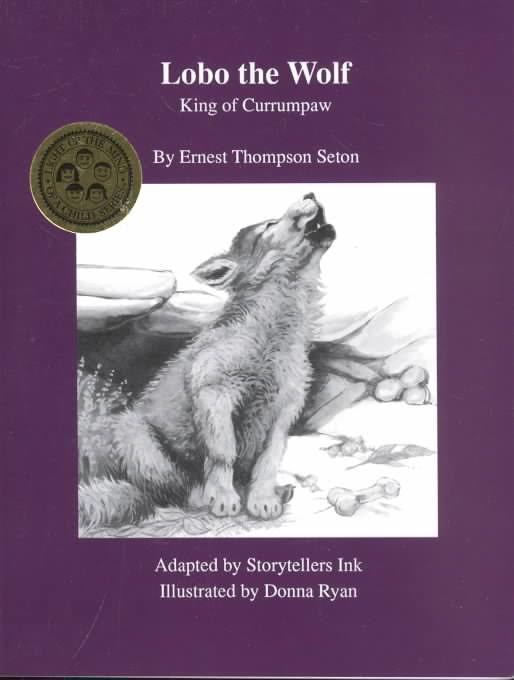Language English Publication date 1898 | Genre(s) Fact based short story Originally published 1898 Country United States of America | |
 | ||
Similar Ernest Thompson Seton books, Gray wolf books | ||
"Lobo the King of Currumpaw" is the first story of author Ernest Thompson Seton's 1898 book Wild Animals I Have Known. Seton based the book on his experience hunting wolves in the Southwestern United States.
Contents
Summary
Lobo was an American wolf who lived in the Currumpaw valley in New Mexico. During the 1890s, Lobo and his pack, having been deprived of their natural prey by settlers, turned to the settlers' livestock. The ranchers tried to kill Lobo and his pack by poisoning carcasses, but the wolves removed the poisoned pieces and threw them aside. They tried to kill the wolves with traps and by hunting parties but these efforts also failed. Ernest Thompson Seton was tempted by the challenge and the $1000 bounty for Lobo's head, the leader of the pack. Seton tried poisoning five baits, carefully covering traces of human scent, and setting them out in Lobo's territory. The following day all the baits were gone, and Seton assumed Lobo would be dead. Later, however, he found the five baits all in a pile covered by dirt and stones to show his disgust at Seton, for which Lobo was responsible.
Seton bought new, specialized traps and carefully concealed them in Lobo's territory, but he later found Lobo's tracks leading from trap to trap, exposing each. When an effort, that was initially supposed to take two weeks, stretched into 4 months of failed attempts to capture Lobo, Seton became tired and frustrated. While camping out above the creek where snow geese and cranes were wintering, he found Lobo's track strangely following a set of smaller tracks. Quickly he realized Lobo's weakness: his mate, a white wolf nicknamed Blanca. Seton then set out several traps in a narrow passage thinking Blanca would fall for Seton's planted baits that Lobo had thus far managed to avoid. Finally Seton succeeded; Blanca, while trying to investigate Seton's planted cattle head, became trapped. When Seton found her, she was whining with Lobo by her side. Lobo ran to a safe distance and watched as Seton and his men kill Blanca by shooting her and tying her to their horses. Seton heard the howls of Lobo for two days afterward. Lobo's calls were described by Seton as having "an unmistakable note of sorrow in it... It was no longer the loud, defiant howl, but a long, plaintive wail." Although Seton felt remorse for the grieving wolf, he continued his plan to capture Lobo.
Despite the danger, Lobo followed Blanca's scent to Seton's ranch house where they had taken the body. Seton then set more traps, using Blanca's body to scent them. During this whole story, Lobo hasn't revealed himself to Seton. On January 31, 1894, Lobo was caught, with each of his four legs clutched in a trap. On Seton's approach, Lobo stood despite his injuries, and howled. Touched by Lobo's bravery and loyalty to his mate, Seton could not kill him. He and his men roped Lobo, muzzled him and secured him to a horse, taking him back to the ranch. Lobo refused to eat or even look at his captors. They secured him with a chain and he just gazed across his fallen kingdom. Lobo died that night, 4 hours later, due to a broken heart.
Legacy
Lobo's pelt is kept at the Ernest Thompson Seton Memorial Library and Museum at the Philmont Scout Ranch near Cimarron, New Mexico. Until his death in 1946, Seton championed the wolf—an animal that had always previously been demonized. "Ever since Lobo", Seton later wrote, "my sincerest wish has been to impress upon people that each of our native wild creatures is in itself a precious heritage that we have no right to destroy or put beyond the reach of our children."
Seton's story of Lobo touched the hearts of many, both in the US and the rest of the world, and was partly responsible for changing views towards the environment and provided a spur for the starting of the conservationist movement. The story had a profound influence on one of the world's most acclaimed broadcasters and naturalists, Sir David Attenborough, and inspired the 1962 Disney film, The Legend of Lobo. Lobo's story was the subject of a BBC documentary directed by Steve Gooder in 2007.
An account of Seton's hunt for Lobo is found in Ernest Thompson Seton: The Life and Legacy of an Artist and Conservationist by David L. Witt. It is based on Seton's personal journal and other historical sources. The story was also featured in a 2010–2011 exhibition at the New Mexico History Museum.
